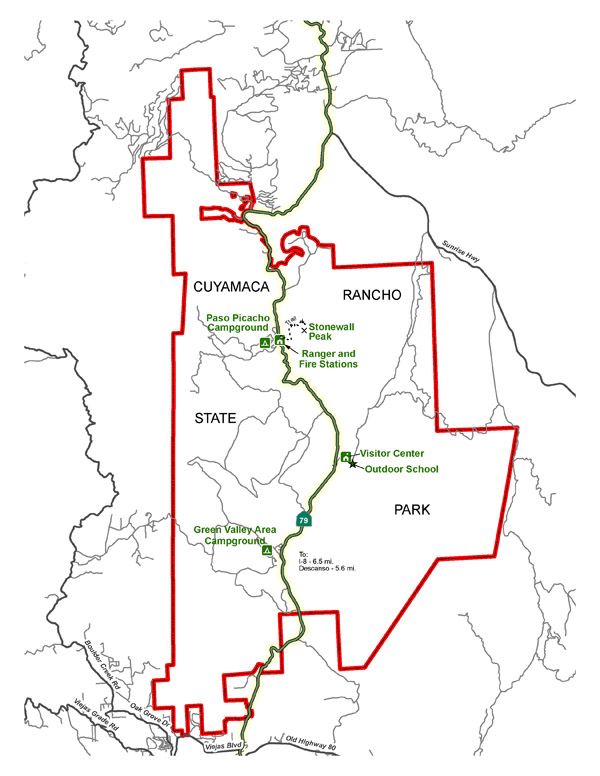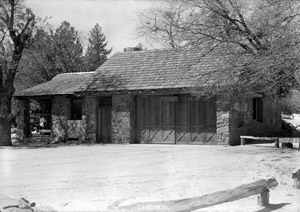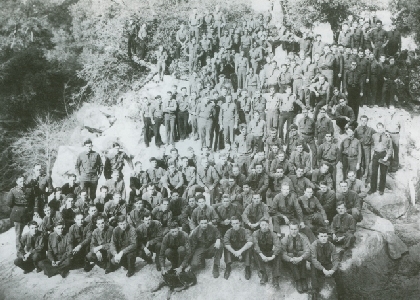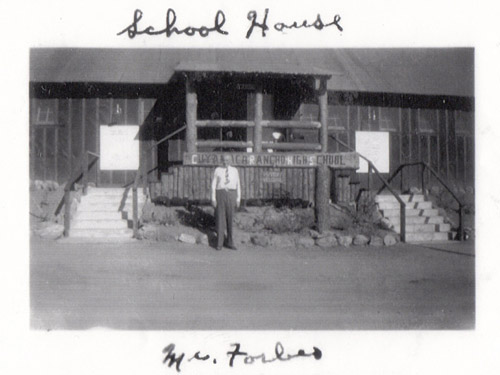Cuyamaca Rancho SP CCC Heritage Adventure


Printable tour map and information (PDF, 2.7 MB) Fire has always been a part of life in the Cuyamaca area. As you approach Cuyamaca Rancho State Park, you will notice extensive evidence of the Cedar Fire, which swept through the entire 24,700 acre park and surrounding area in August, 2003. The fire destroyed several CCC-built structures, including a Boy Scout camp within the park (photo at left), and severely damaged the Dyar House, an historic home that predated the park. Despite the extent and severity of the fire, firefighters were able to save most of the park structures.
Fire has always been a part of life in the Cuyamaca area. As you approach Cuyamaca Rancho State Park, you will notice extensive evidence of the Cedar Fire, which swept through the entire 24,700 acre park and surrounding area in August, 2003. The fire destroyed several CCC-built structures, including a Boy Scout camp within the park (photo at left), and severely damaged the Dyar House, an historic home that predated the park. Despite the extent and severity of the fire, firefighters were able to save most of the park structures.
The CCC companies stationed at Cuyamaca also had heavy firefighting chores on their hands in this fire-prone landscape, especially in summer and fall. They also developed much of the park infrastructure that still exists, including a firehouse that you will see on your tour.
Fire Station and Ranger Station


Look for these two buildings side-by-side to the west of the road, just south of the Paso Picacho campground sign.
The ranger station (above right) was built as the “Warden’s Residence.” (In the 1930s, a park's supervising ranger was called the State Park Warden.) The fire station (above left) is . . . still a fire station! Note the granite monument acknowledging the work of the Cs in front of these two buildings.
Paso Picacho Campground 
The campsites are surrounded by and terraced with rockwork. The highlight of the CCC work in the campground is the Nature Den. It was originally built as the Winter Shelter. At that time, park activities included skiing, tobogganing, and ice skating.
Green Valley Campground
The CCC-built residence is to your left just after you turn off the highway onto the road to the Green Valley campground. Continuing toward the picnic area and campground, you will cross the Sweetwater River on a concrete ford with rockwork on the sides. Yes, this was also built by the CCC.
Touring through the picnic and campgrounds, you will see the characteristic CCC stone campstoves at many sites. You will also see more fire damage. The Cedar Fire destroyed CCC-built bathrooms and tables in both the picnic and camping areas. State Parks replaced the bathrooms with modern comfort stations that blend respectfully with the CCC park rustic style.
Headquarters Area: CCC Camp Cuyamaca site.
 area look like CCC stonework, but were built long before the CCC. State Parks acquired the land for the park from the Dyar family in 1933.
area look like CCC stonework, but were built long before the CCC. State Parks acquired the land for the park from the Dyar family in 1933. The new Cuyamaca Rancho State Park had one of the first CCC camps in California. It opened in May, 1933. The camp included a high school, pictured at left, run by the Julian school district. All Camp Cuyamaca enrollees who were not high school graduates were required to attend school in the evenings.
The CCC also built Girl Scout and Boy Scout camps at Cuyamaca Rancho, but both are now gone. The Girl Scout camp was decommissioned and removed in the 1970s. The Boy Scout camp was still being used regularly until it was destroyed in the Cedar Fire.
To read a 1939 article (PDF, 226 KB) on Cuyamaca Rancho State Park, click here.
For more information on present-day Cuyamaca Rancho State Park, click here.
Want to Go Farther ?
Companies at Cuyamaca spent the winter months in lower elevations, including Anza Borrego Desert State Park. At Anza Borrego they developed the upper Palm Canyon Campground with their trademark stonework camp stoves, tables and benches. They also built several unusual campground shade ramadas complete with fireplaces, which still stand. They constructed a ranger residence, too, and probably were the original builders of the Palm Canyon Nature Trail, which has a distinctive set of stone steps on one section. The stone restrooms they built in the campground have no roofs. This is a little disconcerting for some, but others find the open-air experience combined with privacy to be an improvement over closed-in buildings. A recent visitor to the Palm Canyon campground was heard enthusing to her travel partner, "That was the nicest restroom I ever used!"
of the Palm Canyon Nature Trail, which has a distinctive set of stone steps on one section. The stone restrooms they built in the campground have no roofs. This is a little disconcerting for some, but others find the open-air experience combined with privacy to be an improvement over closed-in buildings. A recent visitor to the Palm Canyon campground was heard enthusing to her travel partner, "That was the nicest restroom I ever used!"
